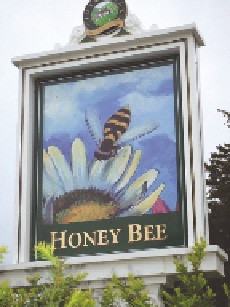Biology Reference
In-Depth Information
Batesian mimicry: cheating by palatable species
Henry Walter Bates (1862) spent eleven years exploring the Amazon rain forest. He
noticed that palatable species of butterflies (mimics) sometimes closely resembled
the appearance of distasteful species (models) and suggested that such mimicry
evolved because of selective predation by birds. Darwin's
Origin of Species
had
been published just three years before and Bates was thrilled by his discovery of
mimicry: 'I believe this case offers a most beautiful proof of the theory of natural
selection'.
There are some wonderful examples of Batesian mimicry (Fig. 4.15): for example,
spiders mimic ants (Nelson & Jackson, 2006), hoverflies mimic wasps (Bain
et al
.,
2007) and harmless snakes mimic venomous snakes (Pfennig
et al
., 2001). Many
laboratory experiments have shown that predators learn to avoid noxious models
and then subsequently avoid palatable mimics. Furthermore, mimics do better when
they resemble the model more closely, when the model is more abundant, or more
noxious, and when alternative palatable prey are available for the predator (Ruxton
et al
., 2004).
Whereas Müllerian mimicry promotes uniformity of colour pattern, Batesian
mimicry promotes polymorphism because mimetic patterns will be at an advantage
when rare relative to the model (predators more likely to sample noxious models) and at
a disadvantage when common (predators more likely to sample palatable mimics).
Thus, as a mimic becomes relatively common, mutants resembling another noxious
model may be favoured. There are several cases where one species has several morphs
living in the same area, each resembling a different model species (e.g. African mocker
swallowtails,
Papilio dardanus
; Vane-Wright
et al
., 1999). In some species there is
evidence that the frequency of each mimetic form is controlled by the frequency of the
Palatable species
may mimic
distasteful species
Polymorphic
Batesian mimics
(a)
(b)
(c)
Fig. 4.15
Batesian mimicry. (a) The highly venemous Sonoran coral snake,
Micruroides euryxanthus
, is the
model for (b) its non-venemous Batesian mimic, the Sonoran mountain kingsnake,
Lampropeltis pyromelana
.
These photographs were taken within 3 km of each other in Arizona. Photos © David W. Pfennig (c) An English
pub sign fooled by a Batesian mimic; this is a hoverfly (
Syrphidae
)! Photo by Francis Gilbert.































